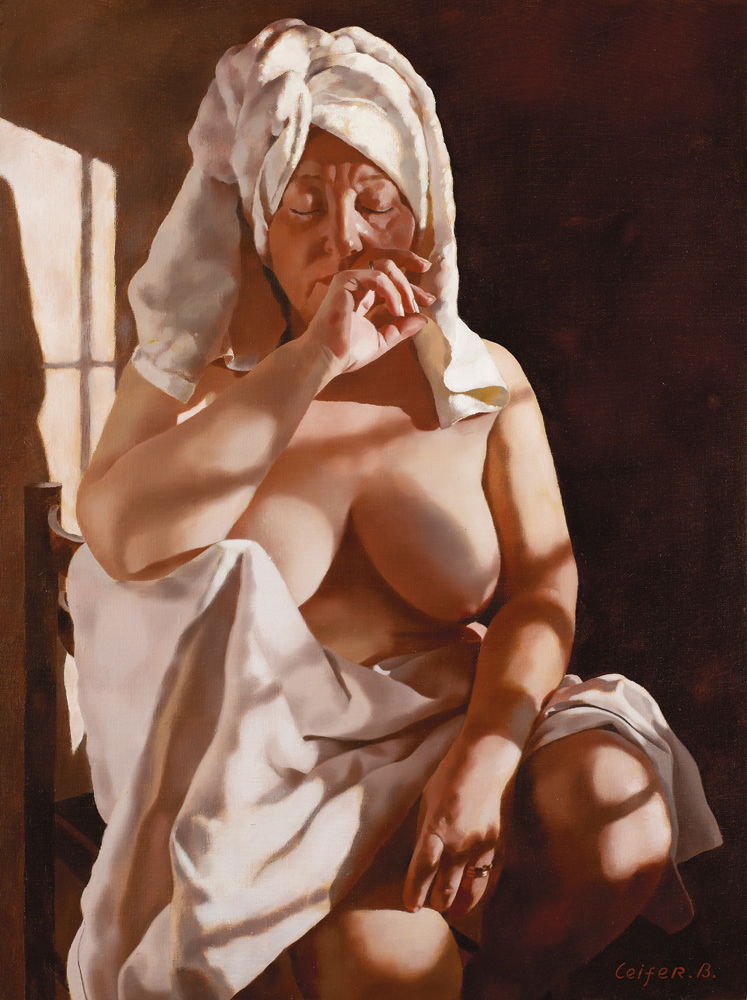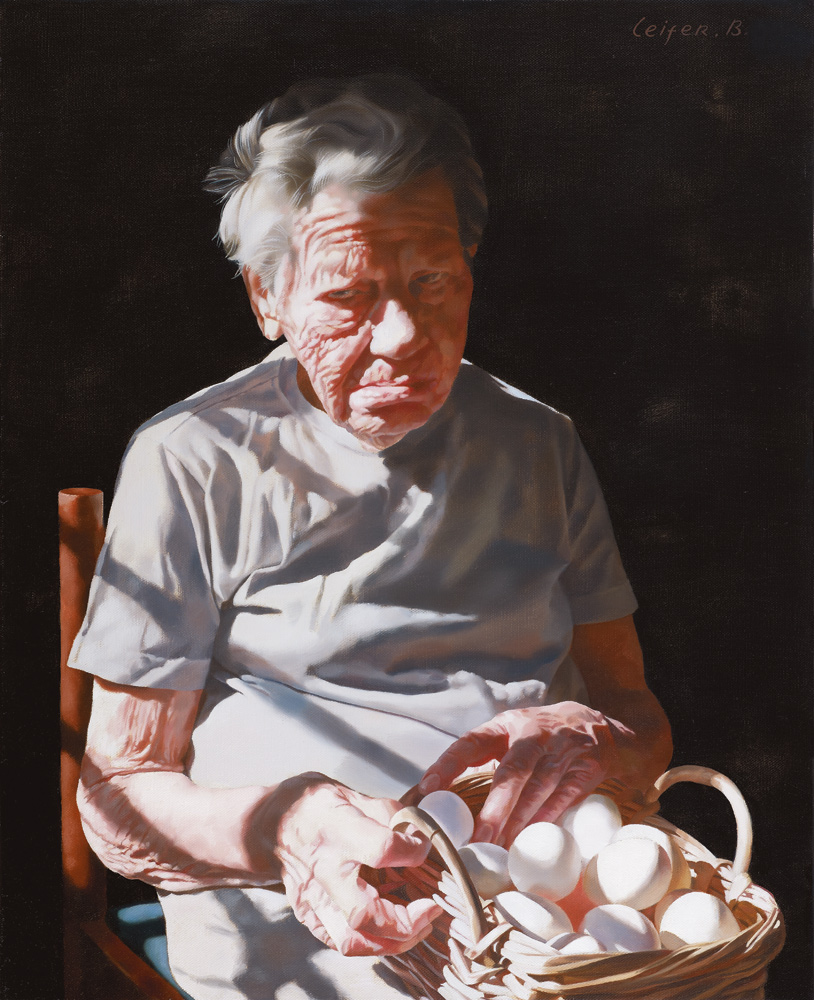BORIS LEIFER

Boris Leifer was born in Ukraine in 1946. In 1969-1975 he studied at the Saint Petersburg Academy of Arts, an institution linked to traditional European painting. Subsequently, he worked as a set designer for the Russian theater. His images indeed surrender a distinct theatrical quality: the flowers, the fruit, the still life and the women. Usually set against a dark background, these images radiate with light in a manner reminiscent of the still-life renditions of the 17th-century Italian artist, Michelangelo de Caravaggio (1571–1610).
He graduated from the Repin State Academic Institute of Painting, Sculpture and Architecture (Leningrad, now Saint Petersburg, Russia) in 1975. He is a member of the Union of Artists of Russia and of the Israel Union of Artists. Leifer participated in regional, district, republican, all-Union exhibitions (USSR), as well as in expositions abroad (in the USA, France, Sweden, Italy, Israel, etc.). He also took part in the International Art-Expo exhibition in Moscow in 1998.

Leifer’s work can be found in many museum collections around the world, such as: The Israel Museum (Jerusalem, Israel); The State Russian Museum (St. Petersburg, Russia); The Moscow Museum of Modern Art (Moscow, Russia); The Chicago Art Museum (Chicago, USA); The Picture Gallery of Torre-Canavese (Torre-Canavese, Italy); The Yaroslavl Art Museum (Yaroslavl, Russia) and in the National Gallery of the Republic of Komi (Syktyvkar, Russia).
Perusal of the images on Leifer’s canvases is awe-inspiring, not because of the comparison to Caravaggio, but due to the feeling that the painterly act itself glows with internal, virtually sacred light. Indeed, Leifer himself stresses the importance of light in the process of creation, noting that on a sunless day he refrains from painting altogether. He further adds that while painting a composition of flowers, he thinks of a musical composition, striving to create a balanced harmony.
It seems that Leifer in his figurative images strives for utmost, Platonic purity. The white vessels depicted on his canvases seem to produce internal light and glow, as described by Philostratus, an appearance which is an illusion of sorts, an illusion of a simple reality, beautified to become seductive and pleasing. The illusion is, in fact, a contradiction in terms: the illusion of materiality, and the illusion of beauty and brilliance engulfing it until the aforesaid materiality seems to dissolve entirely. Leifer seems to compete with the limits of ability, with nature itself.

Respect and praise for the painterly act in the world of antiquity stemmed from profound admiration for the artist’s skill in creating an illusion of a mimicry of nature, intended to convey the yearning for harmony between man and nature, and the difference between nature and culture.2 The artist vanquishes nature, so to speak, with his brush. It is important to note, however, that although the qualities of the work of art in antiquity were gauged by its faithfulness to nature, it was not devoid of spiritual context. Naturalism and mimesis (imitation of nature) in fact served a form of thinking which reflects, on the one hand, the place of nature and divinity in human life, and on the other—the social apparatus. The ripeness of the grapes, for instance, was directly associated with the Dionysian world, whereas the lushness of the pomegranates was tied with the opulence and fertility of the Earth goddess, Demeter. As a social expression, Roman still life represented the diversified refreshments offered to guests, xenia, symbolizing the host’s generosity and nature’s abundance.
All foods presented to guests as part of the ceremony of bringing the stranger (xenos) and extending hospitality, under the auspices of Zeus, God of Hospitality. Opulence is a godsend, as indicated in Euripides’s play “The Bacchae”: When the women perform the divine rite, milk and wine spring from the ground, and pure honey oozes from the branch sanctified to the god Dionysus.

“… on a leafy branch is yellow honey already within the comb and ripe to stream forth if the comb is pressed; and on another leaf is cheese new curdled and quivering; and there are bowls of milk not merely white but gleaming, for the cream floating upon it makes it seem to gleam.”
– by Nava Sevilla Sadeh
December 2015

